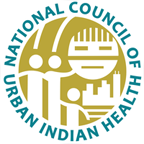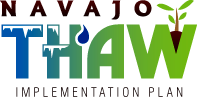
SCIA Tribal Wins Summary
The Phase 3 Stimulus Bill passed by the U.S. Senate is expected to be passed by the House March 27, 2020, and then signed by the President. If this is the case, here is a summary of the benefits to Indian Country.
Indian Affairs in C3: Topline Summary (see NCUIH)
Legislative Authorizations. The CARES Act bipartisan compromise agreement ensures Indian Tribes, Tribally-owned businesses, and Native owned business have equal access to federal COVID-19 economic recovery resources. It will give Tribes and their government-owned enterprises access to $8 billion in flexible funding to support COVID-19 response. And it will make sure Tribes and Tribally-owned businesses have the resources they need to cover the costs of employee payroll and unemployment insurance costs.
Coronavirus Relief Fund – Establishes an $8 billion relief fund at the Department of Treasury for Tribal governments and Tribally-owned entities of those governments to use for expenditures incurred due to the COVID-19 public health emergency in the face of revenue declines. The Treasury Secretary is required to develop a funding distribution model for this fund based on identified need1 and in consultation with the Secretary of the Interior and Indian Tribes.
Tribal Business Concerns – Makes Tribes eligible for the Small Business Act Section 7(a) Paycheck Protection Program, which will provide 100% federal loan guarantees up to $10 million to cover costs like employee salaries, paid sick leave/medical leave, mortgages/rents, and employee health insurance premiums.
Unemployment Insurance – Allows Indian tribes to be reimbursed for half their incurred unemployment benefit costs through December 31, 2020.2
Federal Education Waivers – Authorizes the Department of Education to waive provisions of the Elementary and Secondary Education Act, except civil rights laws, that are necessary and appropriate due to the COVID-19 declaration of disaster for all BIE schools, including Tribal 638 contract schools and Tribal 297 grant schools.
Special Diabetes Program for Indians – Extends the SDPI mandatory authorization at FY2020 levels (i.e., $150 million per year) through November, 2020.
Funding. The CARES Act bipartisan compromise agreement contains over $2 billion in emergency supplemental funding for federal programs that serve Indian Tribes, urban Indian health centers, and Native families. This funding will ensure important Indian health, public safety, child welfare, and safety-net programs can continue operation despite increased strain caused by the COVID-19 public health crisis.
Indian Health Service (IHS) – Provides $1.032 billion in critically needed resources to support the tribal health system during the pandemic, including expanded support for medical services, equipment, supplies and public health education for IHS direct service, tribally operated and urban Indian health care facilities; expanded funding for purchased/referred care; and new investments for telehealth services, electronic health records improvement, and expanded disease surveillance by tribal epidemiology centers.
Bureau of Indian Affairs (BIA) – Includes $453 million to provide aid to tribal governments; support welfare assistance and social service programs, including assistance to tribal members affected by the coronavirus crisis; expand public safety and emergency response capabilities; increase BIA capacity for teleworking so the agency is better prepared to assist tribes; and meet increased staffing and overtime costs.
Bureau of Indian Education (BIE) – Provides $69 million for response needs at BIE-funded schools, including staffing, transportation, telework, and cleaning activities and assistance for tribal colleges and universities across the country to help respond to the crisis.
HUD Office of Native American Programs – Provides $200 million for the Native American House Assistance and Self Determination Act (NAHADSA) Block Grant program with a formula designed to assist Tribally Designated Housing Entities most in need of funding related to COVID-19 response. And $100 million to the Indian Community Development Block Grant to respond to COVID-19 in tribal communities.
Food Distribution Program for Indian Reservations – Provides $100 million to the program that provides USDA commodity foods to low-income households, including the elderly, living on Indian reservations.
Older Americans Act Tribal Nutrition. Provides $20 million for the delivery of nutrition services to American Indians, Alaska Natives, and Native Hawaiian elders.
Indian Child Care Development Block Grant – Provides between $70-96 million for Indian child care programs that serve low-income families to help defray the costs of COVID-19 response, including for continued payments to child care providers during center closures and to provide emergency child care for health care workers, emergency responders, and other COVID-19 “front line” workers.
Appropriations By the Numbers
Agriculture
- $100m+ for FDPIR ($50m food purchase + $50m construction) Interior, EPA, and Related Agencies
- $1.03b for IHS (broad use authority with no less than $450m for Tribal 638 and Urban facilities + $65m for electronic health record modernization)
- $69m+ for BIE (K-12 + TCUs)
- $453m+ for BIA “TPA” like fund/operation of Indian Programs
- $78,000 to IAIA for COVID response
LHHS
- $15m+ for Tribes and Urban facilities through HRSA for telehealth/rural health activities
- $15m+ for Tribes and Urban facilities through the Public Health and Social Services Emergency Fund for essential medical resources to respond to coronavirus3
- $120m+ for CDC grants to Tribes and Urban Indian health organizations
- Ed Stabilization Funding
- 0.5% set-aside for programs operated or funded by BIE
- TCUs are eligible for general higher education funding formula, which is based on formula of 75% for Pell student enrollment and 25% for non-Pell students. TCUs will also qualify for the Minority Serving Institutions set-aside (7.5% of the overall higher ed set-aside).4 Also, TCUs and other MSIs will have flexibility through a statutory waiver to use prior HEA-MSI award money for COVID-related response efforts.
- Student Loan/Aid –AIAN students will get the same benefits as all other students with fed loans.
- $50m+ for Institute of Museum and Library Services (includes Tribal grantees) to “expand digital network access, purchase internet accessible devices, and provide technical support services”
- $900m+ Low Income Home Energy Assistance Program (LIHEAP) supplement for all eligible households, including those covered by Tribal LIHEAP.
- $20m+ for Older American Act Tribal Nutrition activities for the delivery of nutrition services to American Indians, Alaska Natives, and Native Hawaiian elders.
- $96m+ for Indian Child Care Development Block Grant for COVID-19 costs and to provide child care services for health care and emergency workers.
Transportation, Housing and Urban Development, Broadband - $300m+ for NAHASDA & ICDBG; $200m through NAHASDA formula (but only for COVID-needs) and $100m through the Indian Country Development Block grant (ICDBG)
- $100 million for the Re-connect program (Broadband Loan and Grant Program authorized by Sec. 779 of the Consolidate Appropriations Act, 2018).5
- $25 million for Distance Learning and Telemedicine Program. Funding goes toward initial capital assets for equipment (e.g., video conferencing equipment, computers) that operate via telecommunications to rural end-users of telemedicine and distance learning. Broadband facilities (if owned by the applicant) are also eligible. Federally recognized tribes are eligible to apply for DLT grants.
Background
Tribal Governments and Economies
- Because of the economic impacts of COVID-19 pandemic, all governments are experiencing a revenue shortfall in the face of increased demand for government services. But, Tribes are uniquely at risk of a complete disruption in funding for their safety net programs.
- Without a tax base, Tribes rely on Tribal businesses to generate revenue to fund essential government services (e.g., health care, education, public safety, housing and social services).
- Tribal industries contribute $50+ billion/year to Tribal governments and the American economy.
- The COVID-19 pandemic has devastated Tribal businesses, threatening the ability of Tribes to continue providing basic government services or ramp up programs to respond to the COVID-19 pandemic.
- Senate Democrats demanded that – if Congress takes action to address government COVID-19-related revenue shortfalls for states, territories, and local governments to prevent disruption of essential services – they must do the same for Indian Tribes. Parity!
Tribal Health
- Pre-COVID-19, IHS was already under-resourced and was facing down a 25% national clinical staff vacancy rates (in some facilities, like the Gallup Indian Medical Center, the vacancy rate for doctors was over 40% before the start of the COVID-19 crisis).
- CDC has also released reports that suggest AI/ANs have had mortality rates four-times higher than the national average in past public health crises (e.g., Spanish Flu and H1N1 – so, even 100 years no improvement in the mortality rate disparity). There is some records that suggest entire Native villages were wiped out – a 100% mortality rate – during the Spanish flu pandemic 100 years ago.
- Like other health systems, IHS facilities are dangerously low in PPE supplies - some IHS facilities reported reducing operating hours and potential infections of medical staff.
- The situation is so desperate IHS is weighing use of non-CDC approved expired mask.
- Unlike other health systems, IHS does not have direct access to the SNS nor do Tribes receive federal support for public health emergency planning.
- Given that Native communities went into this public health crisis “behind” AND that we know public health crises have disparate impact on Native families AND because Indian Country does not have equal access to federal public health emergency resources, it’s critical that Congress ensure Indian Tribes have direct access to federal health emergency funds and public health resources to face down public health emergencies like the COVID-19 pandemic.
Tribal Nutrition
- Pre-Covid-19, the food insecurity rate for majority-AIAN counties is greater than 20%, well above the national average of 15.1%. And, 60% of all majority AIAN counties have a high food-insecurity rate.
- Some rural Indian lands also have limited access to grocery stores (e.g., the Navajo Nation – which is the size of West Virginia – has only 10 grocery stores total). So, when one store is out of something, Tribal members can’t just “pop down the street” to check another store.
- Given the reported commercial shortages of food nationally, pre-COVID-19 food insecurity in Indian Country, and transportation challenges on many reservations, we expect increased demand for the commodities-based Food Distribution Program on Indian Reservations. The $100 million increase was critical to ensure Tribes have the resources to meet that increased demand.
- The bill establishes that identified need is determined by calculating the additional funds expended by Tribes or their entities in 2020 as compared to the same period in 2019. The bill does not specify if lost revenue is a reimbursable expense.
- Indian Tribes would be eligible to apply for reimbursement for the remaining fifty percent of unemployment benefit costs incurred due to COVID-19 through the flexible Coronavirus Relief Fund.
- These include countermeasures and vaccines, therapeutics, diagnostics, necessary medical supplies, enhancements to the U.S. Commissioned Corps, and other preparedness and response activities.
- Apparently 80% of TCU students get Pell, so TCUs will def. get some funds through this but IDK how many.
- To be eligible, at least 90% of the households to be served by a project receiving a loan or grant under the pilot program must be in a rural area without sufficient access to fixed broadband at a minimum speed of 10 Mbps/1 Mbps. Wireless and satellite is not eligible. As the Program is currently administered, two Tribal specific elements apply: If service is being proposed on tribal land, a certification is required from the proper tribal official that they are in support of the project and will allow construction to take place on tribal land. If no certification is provided, then this area will be ineligible for funding.
